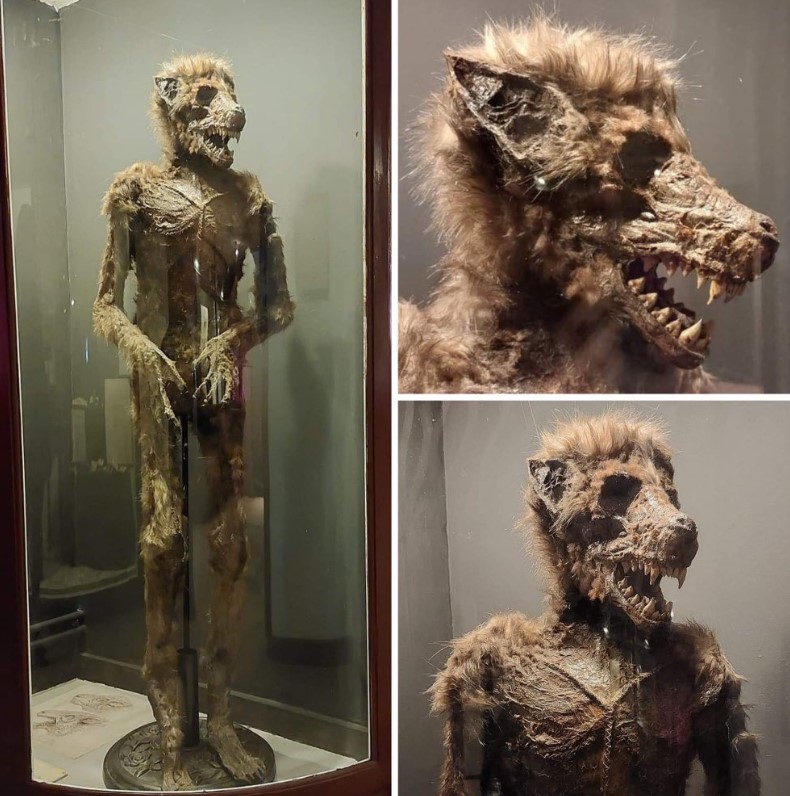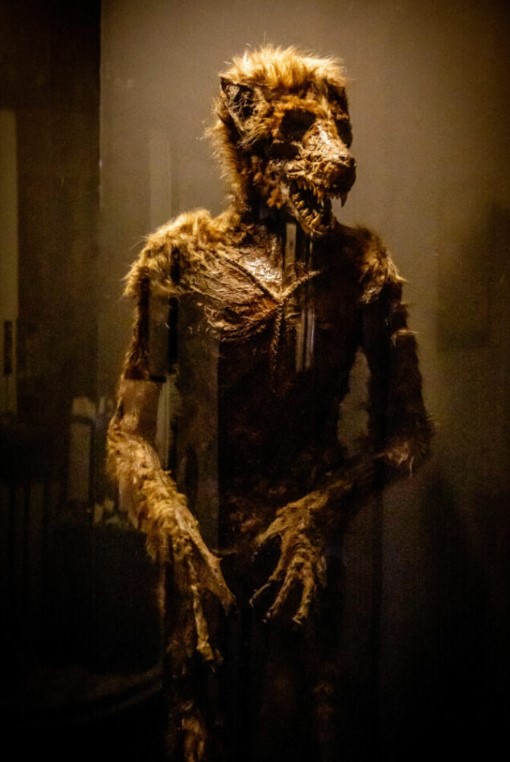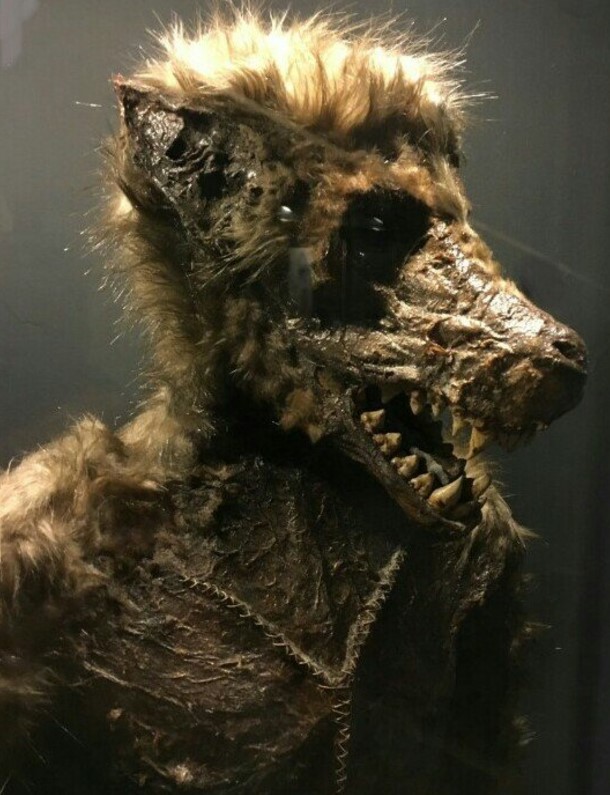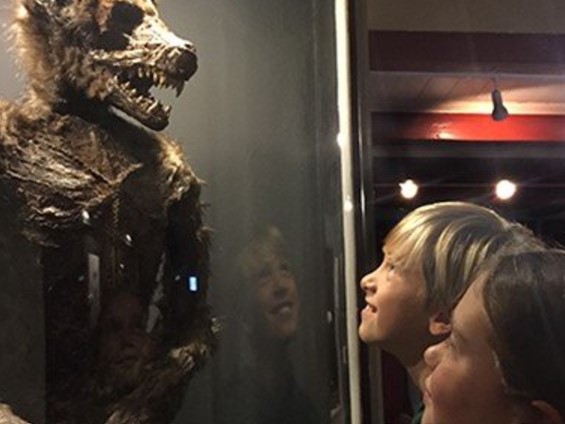In 2017, during a routine renovation at the Little Museum of Nykøbing Falster, a remarkable discovery came to light. Behind a hidden door lay a concealed chamber, untouched for decades. Inside were crates brimming with ancient documents, peculiar sketches, and strange specimens that unveiled the life and pursuits of Cornelius S. C. Rödder, an enigmatic figure with a passion for the occult and cryptozoology. This discovery has since transformed the museum into the mysterious Museum Obscurum, a haven for those intrigued by the fantastical and the unknown. Let’s explore the mysteries hidden here with archeology.dulichvn.net
Secret Room Discovered at Obscurum Museum
A Chance Encounter with History
The renovations at the museum initially aimed to preserve the old building’s structure. However, the hidden chamber, obscured for over a century, revealed a treasure trove of artifacts and documents belonging to Cornelius S. C. Rödder, a figure long forgotten by history.

The Life of Cornelius S. C. Rödder
Born in 1821 in Nykøbing Falster, Rödder hailed from a wealthy noble family of German descent. After studying medicine in Copenhagen, he embarked on travels across Europe, which would dramatically alter his life. A serendipitous meeting in Italy with the famed crypto-naturalist and xeno-archaeologist Thomas Merrylin sparked Rödder’s fascination with the occult.
The Shift to the Dark World
Inspired by Merrylin, Rödder transitioned from conventional science to exploring cryptozoology and the supernatural. He dedicated his life to collecting artifacts, writings, and specimens from what he referred to as the Dark World, amassing an unparalleled trove of mysterious relics.
See more: A Rare Roman Slave Tag: Unveiling the Harsh Realities of Ancient Rome
Welcome to the Museum Obscurum
A Treasure Trove of Cryptozoology
The artifacts discovered in Rödder’s hidden chamber now form the core of the Museum Obscurum, where visitors can marvel at items that blur the line between myth and reality. The collection includes artifacts linked to vampires, fairies, baby dragons, and werewolves, each accompanied by detailed sketches and annotations.

A Glimpse into Rödder’s Mind
The documents and writings found offer a fascinating insight into Rödder’s beliefs and theories. They depict him as a visionary willing to explore the unknown, even at the cost of skepticism from the scientific community of his time.
Interactive Exhibits for Enthusiasts
The Museum Obscurum has transformed into an interactive experience, allowing visitors to engage with exhibits that challenge their understanding of the natural and supernatural worlds.
See more: Exploring the Monument Dedicated to the Ancient Greek Warriors of the Battle of Salamis
The Enigmatic Homo Lupus: The Lycanthrope
Scientific Examination of the Werewolf Myth
Among the most captivating exhibits is a specimen labeled Homo lupus, commonly known as the “werewolf.” This bipedal hominid, closely related to Homo sapiens, exhibits wolf-like characteristics believed to stem from a genetic mutation caused by a viral infection.

Details of the Specimen
The displayed specimen is identified as a 15-year-old female. Historical records suggest she succumbed to starvation, and her remains were the last acquisition of anthropologist Edward Harrell, a contemporary of Thomas Merrylin.
Debate and Intrigue
The Homo lupus exhibit sparks debate among visitors and researchers alike. While some view it as a preserved relic of myth, others consider it an example of misunderstood science or an elaborate hoax.
Cornelius S. C. Rödder’s Legacy
A Forgotten Pioneer Rediscovered
The discovery of Rödder’s collection has reignited interest in a man who dared to challenge conventional knowledge. His work bridges the gap between science, myth, and art, offering a fresh perspective on the human fascination with the unknown.

The Influence of Thomas Merrylin
Rödder’s collaboration with Thomas Merrylin played a pivotal role in shaping his pursuits. Merrylin’s research into cryptozoology and xeno-archaeology provided the foundation for Rödder’s lifelong quest to uncover the Dark World.
A Place in Modern Curiosity
The Museum Obscurum ensures that Rödder’s work continues to inspire, blending history, science, and fantasy into an experience that captivates visitors and provokes thought.
Conclusion: Exploring the Mysteries of the Museum Obscurum
The discovery of Cornelius S. C. Rödder’s hidden chamber and the subsequent transformation of the Little Museum of Nykøbing Falster into the Museum Obscurum is a testament to the enduring allure of the unknown. From cryptozoological artifacts to tales of collaboration with Thomas Merrylin, the museum serves as a bridge between history and myth, offering a fascinating journey into the enigmatic world of the Dark World. Whether fact or fiction, the legacy of Cornelius S. C. Rödder continues to captivate and inspire, leaving visitors with a renewed sense of wonder and curiosity.

CÁC TIN KHÁC
Mark Twain & Olivia Langdon: A 36-Year Love Story Filled with Laughter and Devotion
The Tollund Man: A 2,400-Year-Old Mystery Preserved in a Danish Bog
Skara Brae: Scotland’s Hidden Neolithic Village
Porta Nigra: The Hidden Depths of Trier’s Iconic Roman Gate